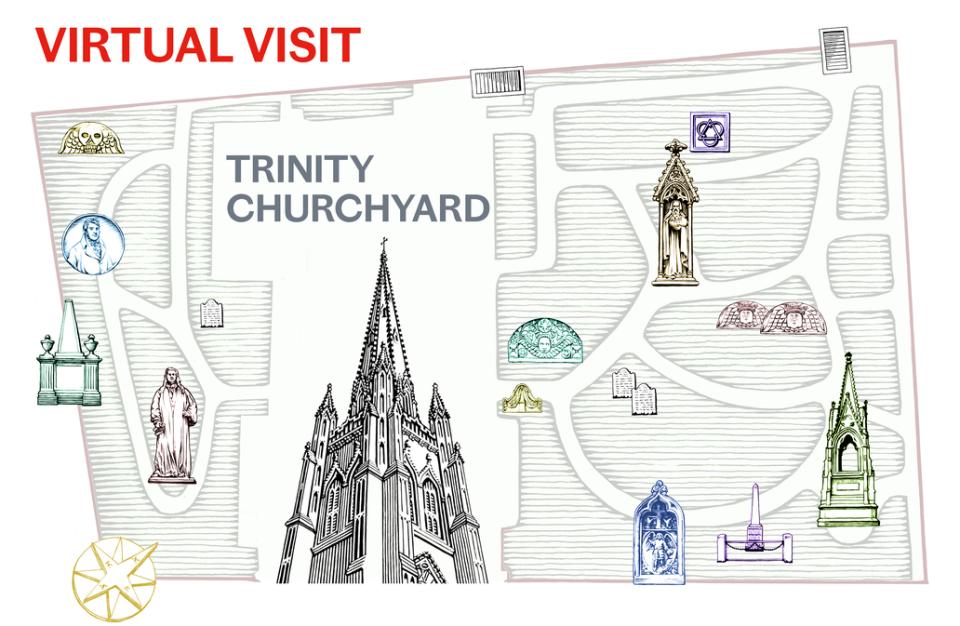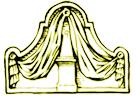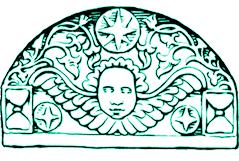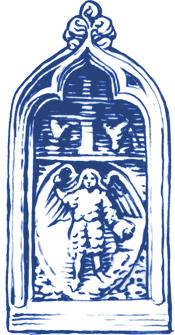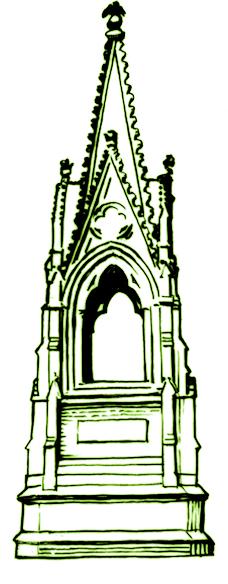There is a lot of history in the Trinity Churchyard. It is the resting place of Alexander Hamilton, the first Secretary of the Treasury, and many other notable men and women. The churchyard includes tombstones and memorials dating back as far as 1681. Today, Trinity Church and St. Paul’s Chapel (on Broadway and Fulton Street) form the cornerstones of Trinity Church Wall Street, an active and welcoming parish that seeks to serve and heal the world by building neighborhoods that live gospel truths, generations of faithful leaders, and sustainable communities. View a virtual visit map of St. Paul's Churchyard too.
Although his actual burial site is unknown, a bronze plaque commemorates Francis Lewis, a signer of the Declaration of Independence. He is the only signer buried in Manhattan.
The restored epitaph for the founder of New York's first newspaper, William Bradford, is one of the most interesting in the churchyard: "Being quite worn out with Old age and labour he left this mortal State in the lively Hopes of a better Immortality. Reader reflect how soon you'll quit the Stage..."
Although difficult to read, the oldest legible gravestone in the cemetery belongs to Richard Churcher, age 5, son of William Churcher, dated 1681.
At the fence along Broadway is a fountain built in 1911 as a memorial to Ann Maria Cotheal Swords by her son. Nearby, there is a tombstone for Charlotte Temple, a fictional heroine of a popular 18th-century novel, Charlotte, A Tale of Truth, by Susanna Rowson, possibly carved by a bored stone cutter.
The Fireman’s Memorial Monument was erected at the request of volunteer firemen from the Empire Steam Engine Company No. 42, as a tribute to six firemen killed as firefighters or in battle as soldiers in the Civil War.
One of the largest monuments in the churchyard is the Soldiers' Monument in honor of Revolutionary War soldiers held in captivity in New York City and thought to be buried at Trinity.
The Astor Cross is a tall, ornate monument erected in memory of Caroline Webster Schermerhorn Astor. Dedicated in 1914, the cross illustrates the genealogy of Christ according to St. Luke.
Alexander Hamilton's sister-in-law, Angelica Schuyler Church, is buried in the Livingston Family Vault. Her maternal grandmother was born a Livingston. Nearby is a memorial for Albert Gallatin, Secretary of the Treasury under Jefferson and Madison and a founder of New York University.
Robert Fulton was an artist, engineer, and inventor. He is best known for developing the first commercially successful steamboat. Fulton Street is named in his honor.
One of the churchyard’s most popular sites is Alexander Hamilton's tomb. In addition to being the namesake and main character of the Broadway hit Hamilton, he was the first Secretary of the Treasury, founded The Bank of New York and the U.S. Mint, and was the youngest framer of the Constitution. Elizabeth Schuyler Hamilton lies next to Alexander’s grave.
A lifelike statue in the South Churchyard is of Honorable John Watts, a member of the Third United States Congress (1793–1795) who later served as a judge in Westchester County and co-founded the Leake and Watts Orphan House, an organization that continues to provide social services today.

